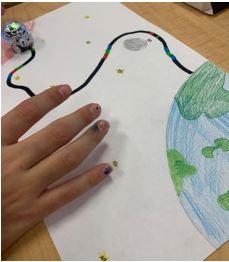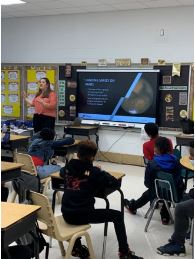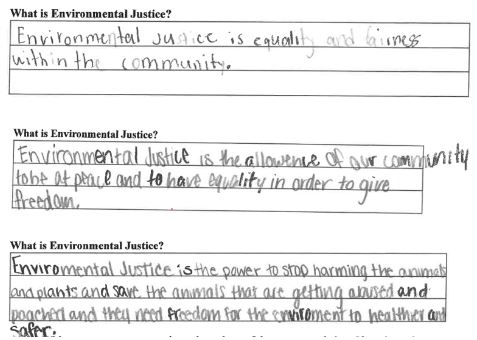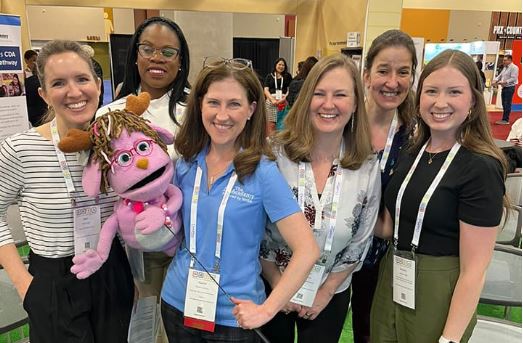When most people think about how schools and museums interact, it’s often in the ways that they might have experienced during their own school days — through a coveted field trip. While it’s true that museum field trips are still some of the most beloved days of the school year, the Smithsonian connects with and supports teachers in a wide range of approaches and on a much more regular basis.

In my role as an educator at the Smithsonian, I am one of a community of over 300 staff that focus on supporting pre-K-12 schools, districts and state education agencies across the country. Many of us have unique, subject-specific specializations, such as civic engagement, STEAM education and arts integration, while others focus on the creation of digital learning tools or supporting a specific grade band, such as early learning.
Some of the most powerful partnerships in education that I’ve witnessed are forged when the experiences and insights of classroom teachers come together through creativity and communication with Smithsonian educators. Below are just a few programs that exemplify the ways Smithsonian educators collaborate with classroom teachers, in service to improved outcomes for all students.
A mission to Mars that starts in the classroom
In a District of Columbia Public Schools and Smithsonian experience, students participate in lessons that include engaging applications of key concepts and hands-on, experiential learning opportunities.

In collaboration with the National Air and Space Museum, fifth-grade students have the opportunity to build skills and content knowledge as they work through scenarios with their peers over a six-week program that includes both in-museum and in-classroom learning. A dedicated museum educator is there every step of the way as she collaborates with the classroom teacher to ensure alignment with the curricula and that ongoing professional learning is taking place so that the lessons are replicable and adaptable in their classroom for years to come.
Students make meaningful, real-world connections as they learn about the exploration of Mars, participate in the engineering and design process, and build 3D models. Additionally, students make connections as they learn how studying geoscience processes on Mars can help us better understand our own planet.

The next astronaut headed to Mars could be in the classroom. Each student leaves with a memorable learning experience that has modeled foundational design and problem-solving practices applicable to many future career pathways.
The exploration of big ideas through slow looking
The Professional Development Collaborative at Washington International School is a community of practice of educators from traditional public, private and public charter schools across the DC, Maryland and Virginia region who learn from each other and local cultural institutions. This includes spending their own time after school and on weekends to visit Smithsonian museums, connecting with educators who lead tours using inquiry frameworks and introduce ideas from exhibits as “learning provocations” or open-ended ideas to explore. Teachers then transfer the approaches or content to their own classrooms and make it their own.
While the museum resources and skills of observation and interpretation are at the heart of these practices, the opportunity to read layers of meaning and hold a group discussion allows both teachers in the professional learning events and students in the classroom to explore many meanings, construct new ideas and ask more questions about important topics ranging from representation and voice to migration and communities.
As elementary educator Ellen Rogers shares, “My big takeaway from all of the museum experiences that I have had over the last few years is to just start trying things out, document what you do, attend trainings when you can and reach out to museum educators for support.”
Shifts in sustainability mindsets
Teachers in Howard University Middle School of Math and Science have partnered with the Smithsonian Science Education Center to support students in exploring topics of environmental justice. The learning experience features eight tasks that incorporate investigations and hands-on science to help students discover, understand and take action.
Beginning with personal experiences and gradually expanding to think more about their own communities, students:
- Learn about how they interact with their environment;.
- Research environmental justice throughout history.
- Learn about a specific environmental issue in their area and the causes of this problem.
- Examine how different environments can make people more or less healthy.
- Discover the themes of injustices.
- Learn more to understand some innovative solutions to environmental problems.
- Develop an action plan for their communities.

In addition to these learning guides, the Smithsonian Science Education Center and Howard University are conducting ongoing research to better understand students’ shifting attitudes when it comes to sustainability and environmental justice topics. The research takes a participatory, strength-based approach that focuses on agency, self-efficacy and sustainability mindsets. It also focuses on the impact that female BIPOC (Black, Indigenous, People of Color) research mentors have on BIPOC middle school students. Together, Smithsonian educators, researchers and classroom teachers are working to better understand the types of supports that can motivate students to take informed action in their communities and help them recognize how diverse individuals and groups engage collectively on environmental issues of local, national and global importance.
Ensuring early learners get a head start with the Smithsonian
We at the Smithsonian are also focused on our youngest learners. We understand that the early years of learning are crucial to development. We are so proud to partner with the National Head Start Association on a project that spans the most museums of any of our programs to develop and deliver rich teaching and learning resources to Head Start programs across the country serving more than a million children from birth to age 5. The team of educators represent the Smithsonian’s National Zoo and Conservation Biology Institute, National Museum of American History, National Air and Space Museum, Hirshhorn Museum and Sculpture Garden, National Postal Museum, National Portrait Gallery and the Smithsonian Early Enrichment Center. The team collaborates closely with NHSA and the Head Start community to understand what supports are needed to bring our rich content to their programs, classrooms and homes.
The project team has developed and evaluated pilot STEAM experiences and classroom resources for Head Start students and held focus groups with Head Start program staff to produce pilot professional development resources for Head Start professionals. These are rooted in a comprehensive set of practices that define a holistic approach to high-quality early learning experiences and resources.
Each of these Smithsonian educator-classroom teacher collaborations allows us to expand our own thinking about how Smithsonian resources can be used for teaching and learning while also supporting the individual classroom teacher in their ongoing and evolving teaching practice.
As one teacher in Sioux City, Neb., shared: “As teachers, we love that it was interactive. So the kids weren’t just sitting, staring at a screen. They were up and moving and answering questions and talking about it. And they took it with them throughout the day and were talking about it all day long. … We live in a very small town, so we don’t have any zoos anywhere near us. And it was a really cool experience being able to bring that to the classroom for them.”
These experiences benefit not only the Smithsonian educator and the classroom teacher involved, but this work also informs the educational materials and online resources we share for free with teachers across the country.
Bringing educators together to help students thrive
The Smithsonian has a long tradition of working in schools and sits at the unique intersection of art, history, culture and science. To continue that commitment, we will be holding our
National Education Summit this summer from July 18-20. We’ll bring museum educators, classroom teachers and others in the education ecosystem together to explore these topics and more.
The programs outlined above are part of both the in-person and online session lineup. Registration is free, and all online sessions will be livestreamed, recorded and archived. We hope you’ll join us!
- Mission to Mars: July 20, 1:15-2:30 p.m., EDT; in-person, pre-registration required at the Smithsonian Arts and Industries Building, Washington, DC.
- How to Use Art to Teach Students About Representation and Voice: July 20, 12:15-1 p.m., EDT; in-person, pre-registration required at the Smithsonian Arts and Industries Building, Washington, DC.
- How Movement and Migration Have Shaped Our World: July 20, 1-1:50 p.m, EDT; livestreamed online.
- Partnering With Youth for Sustainability: Researching the Shift in Students’ Attitudes: July 19, noon-12:50 p.m., EDT; livestreamed online.
- This New Teacher Toolkit Brings STEAM to Life in Your Head Start and Pre-K Classrooms: July 20, 2-2:50 p.m., EDT; livestreamed online.
Ashley Naranjo, M.Ed., is the manager of educator engagement and strategic partnerships in the Smithsonian Office of the Undersecretary for Education.
Opinions expressed by SmartBrief contributors are their own.
_________________________
Subscribe to SmartBrief’s FREE email newsletter to see the latest hot topics on EdTech. It’s among SmartBrief’s more than 250 industry-focused newsletters.
